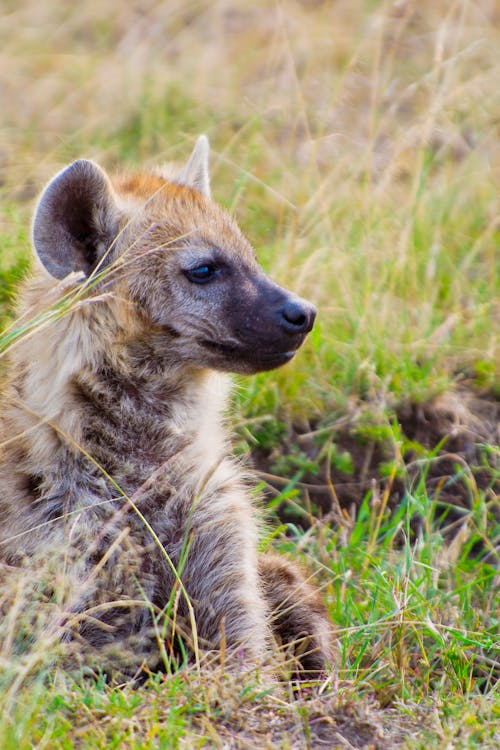Unveiling the Role of Hyenas in The Lion King: Untold Stories and Fascinating Insights! The world of Disney's The Lion King is filled with vibrant characters, but none have been as misunderstood or maligned as the hyenas. Often cast as villains, these creatures hold a more complex role within the narrative than first meets the eye. Exploring their portrayal offers a deeper understanding not only of the story itself but also of broader themes like prejudice and exclusion.
From their depiction in the animated classic to the reimagined roles in the live-action remake, the hyenas continue to spark conversation and debate. This article delves into their significance, examining how they were portrayed, the societal implications of their characterizations, and what these depictions reveal about our perceptions of difference and diversity. Join us as we uncover the untold stories and fascinating insights surrounding these intriguing animals.
One of the most debated aspects of The Lion King is the representation of hyenas and the racial undertones associated with it. In the original animated film, hyenas were depicted as living in the Elephant Graveyard, a dark and desolate place, symbolizing their exclusion from the prosperous Pride Lands ruled by Mufasa. This segregation has sparked discussions about racism in Disney's storytelling, where the hyenas' appearance and mannerisms were seen as caricatures reminiscent of certain stereotypes. While Disney's history includes various interpretations that could be viewed through a racial lens, The Lion King stands out for its vivid portrayal of social hierarchy and exclusion.
The hyena clan plays a pivotal role in the storyline as Scar's loyal followers and henchmen. Their introduction during the song Be Prepared marks the beginning of their alliance with Scar, who plans to overthrow Mufasa and claim the throne. Following Mufasa's demise and Simba's exile, the hyenas are granted access to the Pride Lands under Scar's rule. However, this newfound freedom comes at a cost, leading to the deterioration of the land due to overhunting and mismanagement. This scenario highlights the consequences of greed and power lust, showcasing how unchecked ambition can lead to ruin.
Beyond their antagonistic role, the hyenas represent more than just villains; they symbolize an entire community ostracized and marginalized. Their banishment from the Pride Lands underscores themes of exclusion and discrimination, resonating with real-world issues of inequality and prejudice. By exploring these dynamics, viewers gain a richer understanding of the layered narrative woven into The Lion King.
Hyenas: Misunderstood Creatures in the Pride Lands
In the world of The Lion King, hyenas are often perceived as crude and unspeakably plain, lacking the regal qualities of lions. Yet, this perception overlooks the complexity and intelligence of these creatures. On stage adaptations of the musical, intricate designs bring hyenas like Shenzi to life, capturing their essence through collaborative performances. These portrayals challenge initial assumptions, inviting audiences to reconsider preconceived notions about hyenas.
Aurora® Adorable Flopsie™ Hunter Hyena™ stuffed animals and other merchandise further humanize these characters, offering children and collectors alike a chance to engage with them beyond their screen personas. Such products help bridge the gap between fictional representations and real-life appreciation, fostering empathy and understanding for hyenas both in the wild and on-screen.
As seen in fan reactions and social media posts, opinions vary widely regarding hyenas' essentiality in the story. Some argue that their presence enriches the narrative, adding depth and tension, while others see them as mere comic relief or menacing figures. Regardless of perspective, their inclusion sparks meaningful dialogue about diversity and inclusivity in storytelling.
Redefining Perceptions: From Villains to Vital Characters
Shenzi, Banzai, and Ed form a trio central to The Lion King's plot development. As loyal followers of Scar, they embody loyalty and cunning, traits often overshadowed by their villainous acts. Their banishment from the Pride Lands due to destructive eating habits adds another layer to their characterization, highlighting the struggle between survival instincts and societal norms.
Through Timon's revelation in The Lion King 1½, Shenzi's full name reveals nuances in her personality, suggesting layers beneath the surface-level portrayal. Names carry meanings that resonate deeply, influencing perceptions and relationships. Understanding these details enriches the audience's connection to the characters, making them more relatable and human-like despite being animals.
This redefinition challenges viewers to look beyond traditional good vs evil dichotomies, encouraging empathy towards characters traditionally labeled as 'bad'. It prompts reflection on how biases shape our views and whether such labels truly reflect reality. In doing so, it fosters greater appreciation for diverse perspectives and experiences represented within the story.
Nature's Intelligence: Challenging Stereotypes About Hyenas
Contrary to popular belief, hyenas are far from being stupid animals. In fact, they rank among the most intelligent species in the animal kingdom. Londolozi Blog emphasizes this point, debunking myths surrounding their intellect and behavior. Real-world observations reveal hyenas as strategic hunters capable of complex problem-solving, contradicting their on-screen depiction as brutish and unintelligent.
Such misconceptions stem partly from cultural narratives perpetuated through media like The Lion King. By portraying hyenas negatively, these stories reinforce harmful stereotypes rather than reflecting factual knowledge about the species. Addressing these inaccuracies becomes crucial in promoting accurate representations and dispelling misinformation.
Educational initiatives focusing on wildlife conservation and awareness play vital roles in reshaping public opinion. Highlighting positive attributes of hyenas contributes to broader efforts aimed at protecting endangered species worldwide. Through informed storytelling, we can inspire respect and admiration for all forms of life, fostering coexistence and mutual understanding between humans and nature.

